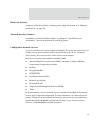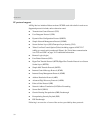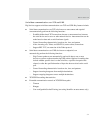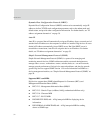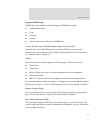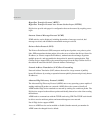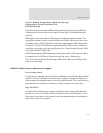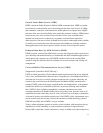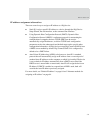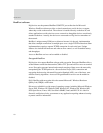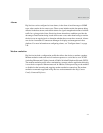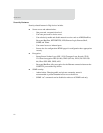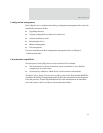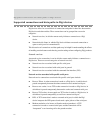
37
Introduction
General Packet Radio Service (GPRS)
GPRS is based on Global System for Mobile (GSM) communication. GPRS is a packet-
based wireless communication service that transports data rates from 56 up to 114 Kbps
and continuous connection to the Internet for mobile phone and computer users. Higher
data rates allow users more flexibility in the media they transmit. In theory, GPRS packet-
based service costs users less than circuit-switched services since communication
channels are being used on a shared-use, as-packets-are-needed basis rather than
dedicated only to one user at a time. It should also be easier to make applications available
to mobile users because the faster data rate means that middleware currently needed to
adapt applications to the slower speed of wireless systems will no longer be needed.
Enhanced Data Rates for GSM Evolution (EDGE)
EDGE is a faster version of the GSM wireless service and designed to deliver data at rates
up to 384 Kbps and enable the delivery of multimedia and other broadband applications to
mobile phone and computer users. The EDGE standard is built on the existing GSM
standard, using the same time-division multiple access frame structure and existing cell
arrangements.
Universal Mobile Telecommunications Service (UMTS)
(Supported in ConnectPort WAN VPN only.)
UMTS is a third-generation (3G) broadband, packet-based transmission of text, digitized
voice, video, and multimedia at data rates up to 2 megabits per second (Mbps) that offers a
consistent set of services to mobile computer and phone users no matter where they are
located in the world. Based on the Global System for Mobile (GSM) communication
standard, UMTS, endorsed by major standards bodies and manufacturers, is the planned
standard for mobile users around the world and is at present still being made available.
Once UMTS is fully available geographically, computer and phone users can be
constantly attached to the Internet as they travel and, as they roam, have the same set of
capabilities no matter where they travel to. Users will have access through a combination
of terrestrial wireless and satellite transmissions. Until UMTS is fully implemented, users
can have multi-mode devices that switch to the currently available technology (such as
GSM 900 and 1800) where UMTS is not yet available.
Today's cellular telephone systems are mainly circuit-switched, with connections always
dependent on circuit availability. A packet-switched connection, using the Internet
Protocol (IP), means that a virtual connection is always available to any other end point in



